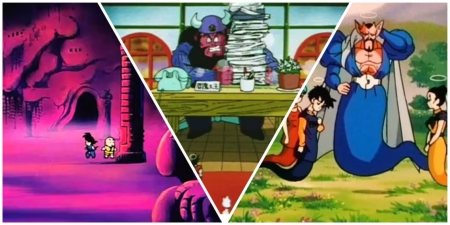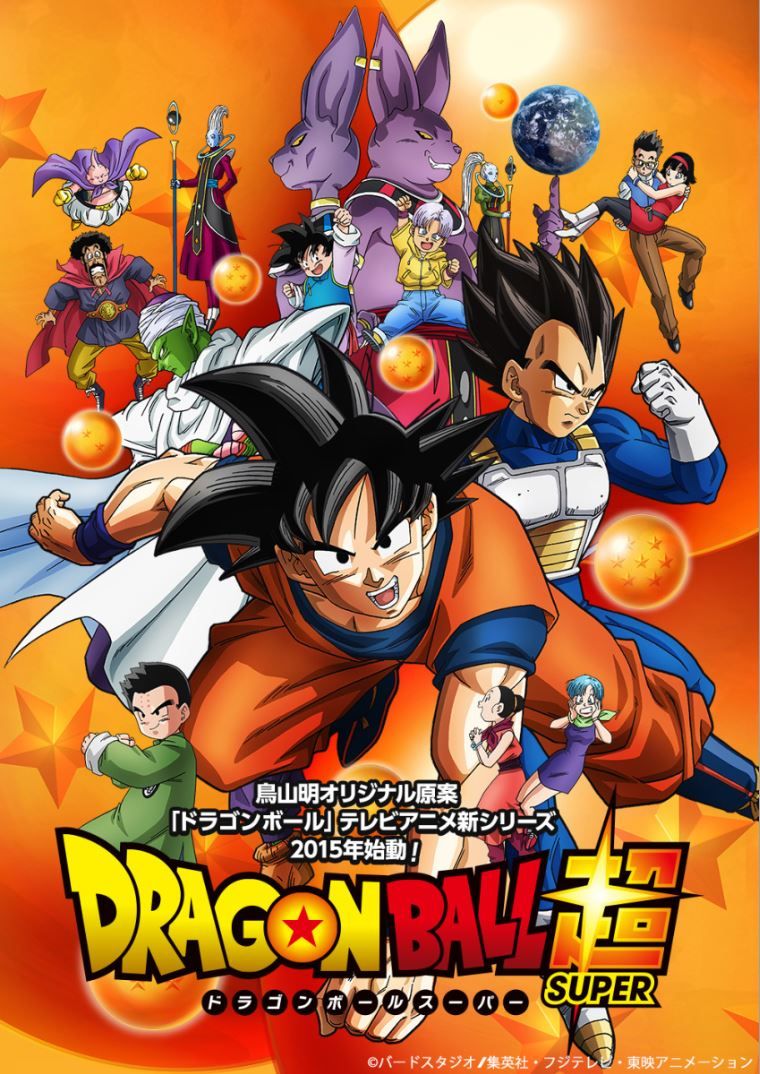The Afterlife in Dragon Ball, Explained
- 03-Mar-2024, 17:01
- 0 Comments
- 20 views

Akira Toriyama’s "Dragon Ball" universe boasts rich character development and intricate lore, including a vibrant afterlife commonly referred to as Other World. Death is a frequent occurrence in battle shonen anime, but in "Dragon Ball," where resurrections and second chances at life abound, it holds particular significance. While Other World receives limited exploration in the original "Dragon Ball," Goku's early demise in "Dragon Ball Z" catalyzes a deeper exploration of the franchise's afterlife, transforming it into a regular destination for its characters, each imbued with its own distinct personality. Once synonymous with departure from the narrative, death now houses a plethora of essential characters who thrive within Other World's realm.
Moreover, Other World serves as a catalyst for significant breakthroughs and power upgrades, opportunities that would be otherwise unattainable without the extended stays in the afterlife. "Dragon Ball" meticulously crafts Other World to be a realm of boundless potential rather than a mere abstract concept, fully integrating it into the fabric of the narrative. However, the complexity of Other World, with its myriad destinations and intricate rules, can prove daunting even to seasoned fans, let alone casual viewers.
Indeed, the Other World in "Dragon Ball" is governed by a multitude of distinct rules that shape the behavior and interactions of its inhabitants.
In the realm of "Dragon Ball," the afterlife's rules regarding individuals upon their deaths are notably fluid, with "Dragon Ball Z" stressing that deceased characters become disembodied spirits in Other World, where retaining one's Earthly form is considered a privilege, particularly reserved for esteemed heroes as a reward for their selfless deeds. This notion becomes pivotal in the narrative, as evidenced by Goku's ability to retain his body upon passing, and further underscored during Vegeta's demise in his battle against Buu, where the preservation of his form signifies his transformation into a true hero and the absolution of his past transgressions.
Furthermore, "Dragon Ball" suggests that heroes in the afterlife can receive replacement bodies rather than being confined to replicas of their final moments, a process exemplified by characters like Chiaotzu and Tien, who are granted new bodies to rectify their untimely demises. However, while these rules and restrictions initially adhere to a coherent framework, the franchise's extensive filler content focusing on the afterlife has led to a more lax interpretation, as seen in "Fusion Reborn" and "Dragon Ball GT," where villains like Frieza and Cell retain their bodies despite their malevolent nature, a concession made for narrative clarity despite its departure from established lore.
Additionally, "Dragon Ball" introduces general rules surrounding energy consumption and the perception of time in Other World, elucidating why Goku exhibits greater mastery over his Super Saiyan 3 form in that realm. Moreover, the concept of reincarnation is prevalent, exemplified by Kid Buu's transformation into Uub, symbolizing the cycle of purification and rebirth within the series.
Despite its complexity and evolving portrayal, "Dragon Ball" maintains a multifaceted relationship with its depiction of Other World's Hell, which undergoes nuanced exploration throughout the franchise's narrative journey.
In "Dragon Ball," Other World serves as a vibrant hub of spiritual destinations, with particular emphasis placed on Hell due to its significance as the ultimate resting place for the series' villains. Initially introduced as the eternal prison for evildoers, Hell undergoes nuanced exploration in various installments of the franchise, including "Dragon Ball Z's" feature films, "Dragon Ball GT," and "Dragon Ball Super," wherein crafty villains devise means to escape confinement and wreak havoc upon Earth.
Notably, "Fusion Reborn" presents a monumental jailbreak from Hell, while "Dragon Ball GT" sees a collaboration between Dr. Gero and Dr. Myuu to breach the barrier between Other World and Earth, enabling villains like Hell Fighter 17 to merge with Android 17. "Dragon Ball Super" further delves into Hell's dynamics, revealing that it is overseen by annoying Angels rather than the Ogres depicted in the anime-only filler episodes of "Dragon Ball Z," where Hell was euphemistically referred to as the Home For Infinite Losers. In this iteration, Frieza's entrapment in a cocoon underscores the precarious balance of power within Hell.
Moreover, "Dragon Ball Super" introduces the concept of multiple versions of Heaven and Hell, tailored to the beliefs and customs of each universe's inhabitants. Upon death, individuals are consigned to the afterlife corresponding to the planet on which they met their demise. Frieza's predicament in "Earth's Hell" exemplifies this, despite his limited time on the planet before his demise at the hands of Future Trunks. This multiplicity of afterlife realms reflects the diverse array of planets and species within the "Dragon Ball" universe, where perceptions of torment and bliss vary widely.
Additionally, Other World features a distinct version of Heaven, further highlighting the nuanced cosmology of the "Dragon Ball" universe.
In "Dragon Ball," the depiction of Heaven is comparatively rarer than Hell and is first introduced in the final story sagas of "Dragon Ball Z." Unlike the desolate wasteland of Hell, Heaven is portrayed as a picturesque planet adorned with flowers at the edge of Other World's universe. Notably, Goku briefly trains here with King Kai following his second death, offering viewers a glimpse into this serene realm. However, Heaven's most significant depiction occurs when Bulma, Chi-Chi, and Videl journey there in search of Gohan, whom they believe to have been killed by Buu. Spirits in Heaven possess bodies but also exhibit ghostly tails, presenting a unique hybrid between living beings and disembodied spirits.
A particularly intriguing exploration of Heaven involves King Yemma's unconventional punishment of the villain Dabura, who is sent to this sacred destination despite his explicitly evil nature. Recognizing that a demon like Dabura would find solace in Hell, King Yemma opts to send him to Heaven as a form of punishment. Surprisingly, Dabura's time in Heaven leads to his transformation into a good person, highlighting the realm's healing power and capacity for redemption. Similarly, "Dragon Ball GT" presents an unconventional twist when Piccolo, upon his death, is initially sent to Heaven but opts to cause chaos to be transferred to Hell, where he believes he can better assist Goku and the world. This dynamic suggests that one's placement in Heaven is not permanent and can be reversed if circumstances warrant.
Additionally, "Dragon Ball" features various waystation destinations within Other World, such as Snake Way and the Kai's planets, which serve as transitional realms connecting Earth to the afterlife. These locations play pivotal roles in the narrative, facilitating travel between realms and providing opportunities for character development and training.
In "Dragon Ball," Hell and Heaven are central destinations within the afterlife's Other World, but the journey to reach these final resting places often involves traversing great distances across various waystation locations. These include Snake Way, King Kai's Planet, and the Sacred World of the Kai, each serving to enhance the skills of deceased individuals as they progress toward their ultimate destinies. Goku, in particular, benefits greatly from his time spent at these waypoints, which significantly contribute to his strength and abilities.
Furthermore, the original "Dragon Ball" introduces the Furnace of Eight Divisions, located on Mount Five Element, as a gateway to Other World. While primarily featured in filler episodes, this gateway holds significant importance, guarded by Annin and subjecting visitors to mind-tricks and illusions. Despite its mystical nature, the Furnace of Eight Divisions provides a means for individuals to make contact with deceased ancestors, as seen in Goku's brief reunion with Grandpa Gohan. The furnace's flames, if extinguished, require 2000 years to reignite, highlighting their symbolic significance and serving as a deterrent against dark spirits exploiting the gateway to invade the living world.
Additionally, "Dragon Ball" hints at the existence of Limbo, a realm shrouded in mystery and suffering. While not extensively explored, it is mentioned that Demon King Piccolo's Demon Clan resides there for eternity following their demise, suggesting that Limbo is regarded as a fate worse than Hell, with no possibility of escape.
Furthermore, "Dragon Ball" also introduces the Demon Realm as another dangerous spiritual realm, further adding depth and complexity to the series' afterlife mythology.
"Dragon Ball" has intermittently delved into the enigmatic Demon Realm, a shadowy dimension distinct from both the living world and Other World, yet serving a comparable purpose within the series' mythology. Created over 75 million years ago by dark wizards like Babidi, the Demon Realm serves as the abode of malevolent races such as demons and Majin, governed by entities like the Demon Supreme Kai, evil Gods, and the ultimate authority, Demigra. Formerly holding the esteemed title of ruler of the Demon Realm, Dabura later became a devoted follower of Babidi. Similarly, Janemba occupies a revered role in this realm as the embodiment of pure evil, stemming from the overload of Other World's Soul Cleansing Machine.
While sharing similarities with Other World's Hell in layout, the Demon Realm boasts distinctive landmarks like Mechikabura's Tower and Demigra Castle. Unlike Hell or Heaven, where villains may experience a reduction in their abilities, the Demon Realm harnesses a potent form of Dark Energy magic, making it a chaotic and perilous destination, potentially even more hazardous than Hell depending on the occupants. These diverse spiritual realms underscore "Dragon Ball's" imaginative exploration of the afterlife, hinting at further development as the series progresses, particularly in "Dragon Ball Super."

Dragon Ball tells the tale of a young warrior by the name of Son Goku, a young peculiar boy with a tail who embarks on a quest to become stronger and learns of the Dragon Balls, when, once all 7 are gathered, grant any wish of choice.